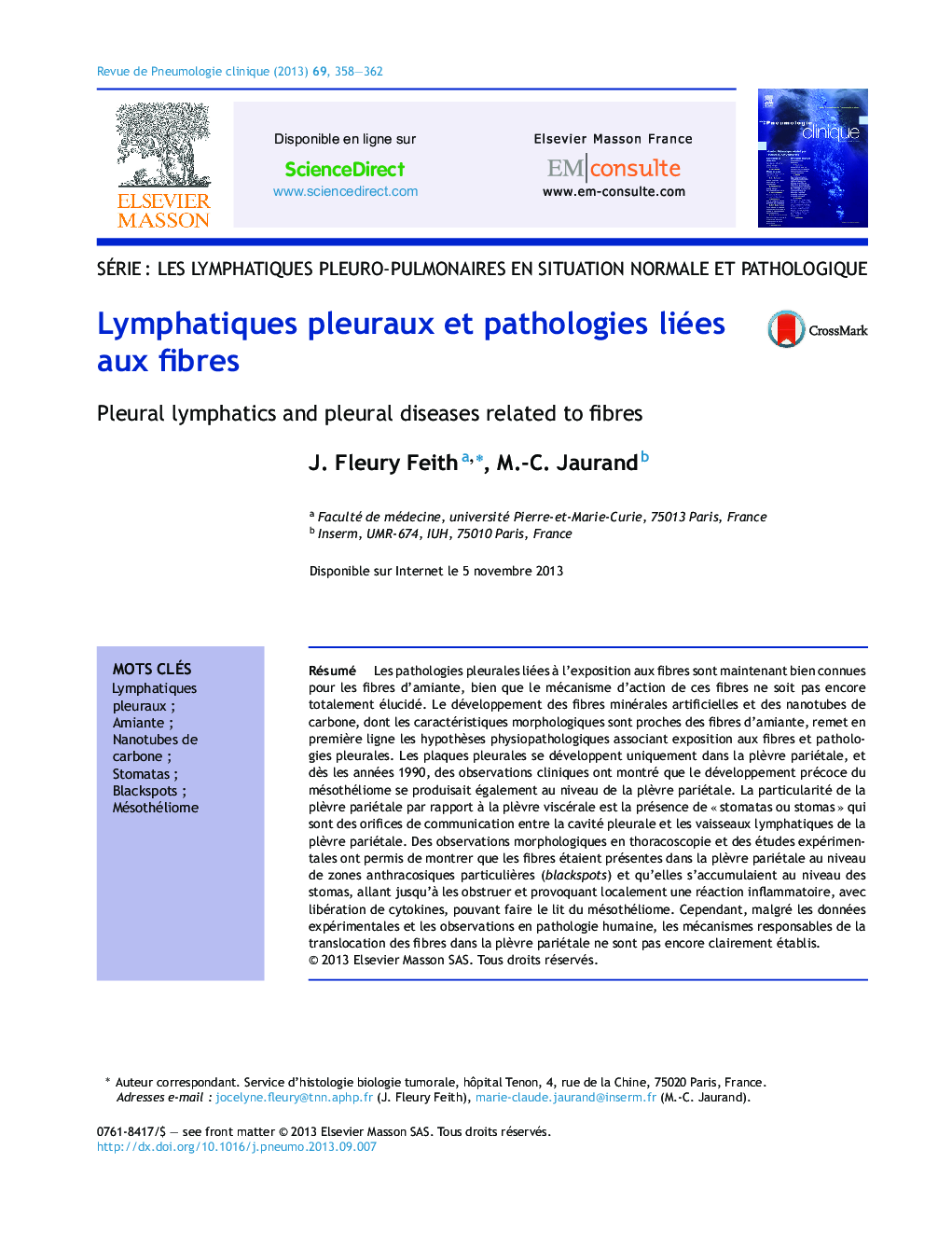| Article ID | Journal | Published Year | Pages | File Type |
|---|---|---|---|---|
| 3419584 | Revue de Pneumologie Clinique | 2013 | 5 Pages |
Abstract
It is now well established that some pleural diseases, pleural plaques and malignant mesothelioma are related to asbestos fibre exposure although the mechanism of action of asbestos fibres is not fully understood. The development of artificial mineral fibres and carbon nanotubes, which share some morphological characteristics similar to asbestos fibres, is a present concern in the context of pleural diseases. Pleural plaques develop only in the parietal pleura, and in the 1990s, clinical observations have shown that the early development of mesothelioma also occurred on the parietal pleura. The peculiarity of the parietal pleura in contrast to the visceral pleura is the presence of “stomas” which are communication holes between the pleural cavity and the parietal pleura lymphatics. Morphological observations by thoracoscopy and experimental studies have shown that inhaled fibres translocate to the pleural space and, in human, are present in the parietal pleura at specific anthracotic areas (blackspots). Fibres accumulate on the stomas, up to block and locally induce an inflammatory reaction with cytokines release, that can be the bed of mesothelioma. However, despite the experimental data and observations in human pathology, the mechanisms of fibre translocation into the pleura is not yet clearly established.
Related Topics
Health Sciences
Medicine and Dentistry
Infectious Diseases
Authors
J. Fleury Feith, M.-C. Jaurand,
